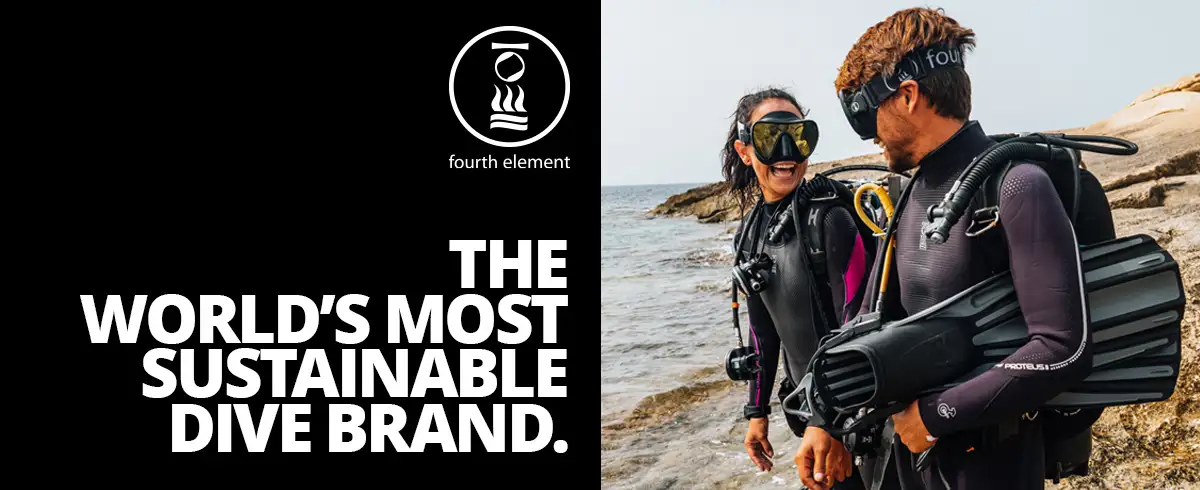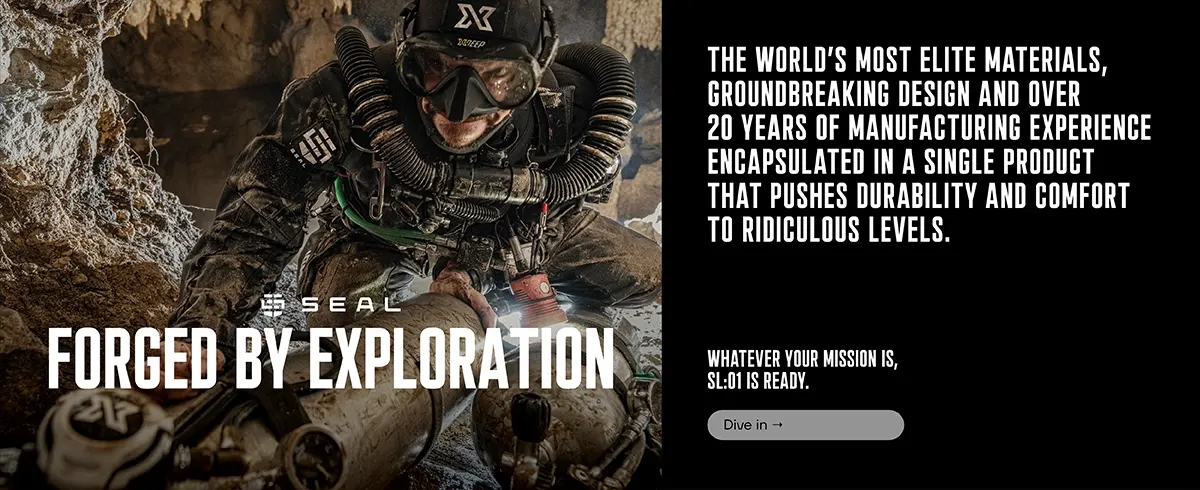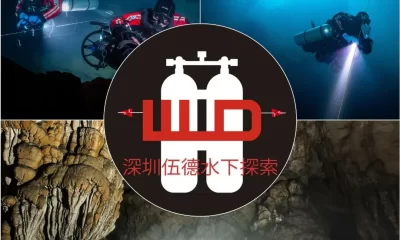
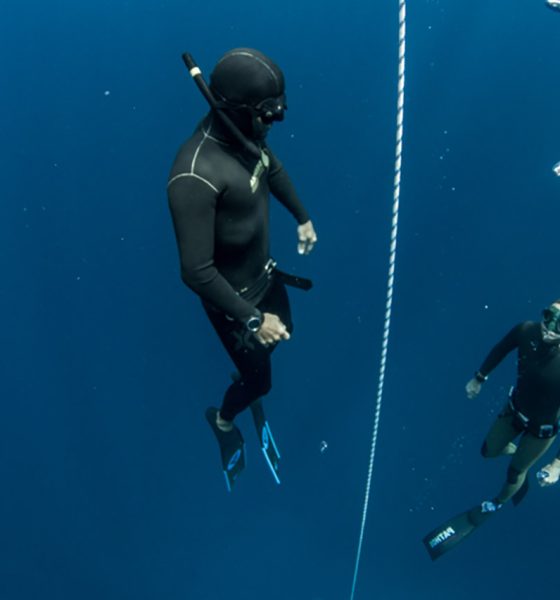
Education
Why Tech Divers Should Take A Freediving Course
The tech community can arguably learn a lot from freedivers who have operationalized their knowledge and their ability to manipulate mammalian physiology, to significant effect. Today’s top athletes are all pushing beyond 100 meters feet, while even intermediate freedivers are reaching tech diving depths. That’s why we recommend that every tech diver should take a freediving course. Freediving educator Ted Harty explains why.
By Ted Harty. Lead image courtesy of Lorenzo Mittiga. Other images courtesy of Ted Harty.
Hey there, tech diver!
You and I both started as scuba divers.
Then, we both decided plain old “regular” scuba diving wasn’t enough for us.
You decided you wanted to go deeper and stay longer.
You decided if one tank was good, eight tanks were better.
You decided you wanted more math in your dive planning.
You decided you wanted way more gear.
You decided you wanted a new type of diving where a mistake might kill you.
You decided you want to spend way more money to go diving.
You decided going into tiny, tight places sounds like fun!
You are kind of crazy.
Remember that the next time you say those freedivers are “crazy”.
I took a different path. I taught scuba in the Keys for several years. Paychecks in paradise, beers and bikinis, I bought it hook, line, and sinker; I was an easy mark. Eventually, I started freediving and that changed my life more than any choice I have ever made.
Today, my job is to convince you that you should try freediving for two reasons:
#1 It’s awesome.
#2 It will make you a better tech diver.
My name is Ted Harty, and I’m the founder of Immersion Freediving and my pride and joy www.FreedivingSafety.com, which is a free online coursed that will teach you how not to kill yourself while freediving and how to save your buddy’s life if they blackout. Don’t worry, more on this fun topic later. I’ve appeared on the Discovery Channel training Tim Kennedy, worked with Jack Dorsey, ex-CEO of Twitter, and trained Ben Greenfield.
Before we get into why you should try freediving, let me handle the most common objection I get: “Ted, freediving looks awesome, but I’m too old, I’m too out of shape, I can only hold my breath for 45 seconds.” If you want to be a world record freediver then yes, you need to be an elite athlete. If you just want to be a regular old freediver, you don’t.
I have a body built by beer, bourbon, and BBQ, yet my deepest freedive is 85m/279 ft, and my longest breath hold is 7 minutes. My average student after my 4-day PFI intermediate class does a 4-5 minute breath hold and a 30m/100 ft freedive. At the recreational level, being a good freediver is mostly about knowledge and technique, not rare athletic ability.
Let’s get started!
SACR and DACR rates, anyone?
Tech divers obsess about how much oxygen they are using. Guess who obsesses about that more than you do… FREEDIVERS!
We use many techniques to reduce our oxygen consumption. Freedivers spend a lot of time focusing on our breathing, especially before a dive. I always say the biggest secret to holding your breath is not what you do during the breath hold, but what you do before the breath hold.
“The biggest secret to holding your breath is not what you do during the breath hold but what you do before the breath hold.”
We learn how to use our breathing to slow down our heart rates, which reduce our oxygen consumption.
We also know how to increase the oxygen carrying capacity of our blood, more on that below.
After I took my freediving class and applied the breathing techniques I learned, I immediately lowered my air consumption while scuba diving.
You have to understand I was a dive instructor at the time and was diving almost every day year-round, and I even noticed an immediate improvement.
If you want to lower your surface air consumption rate (SACR) and depth air consumption rate (DACR) learn freediving breathing techniques.
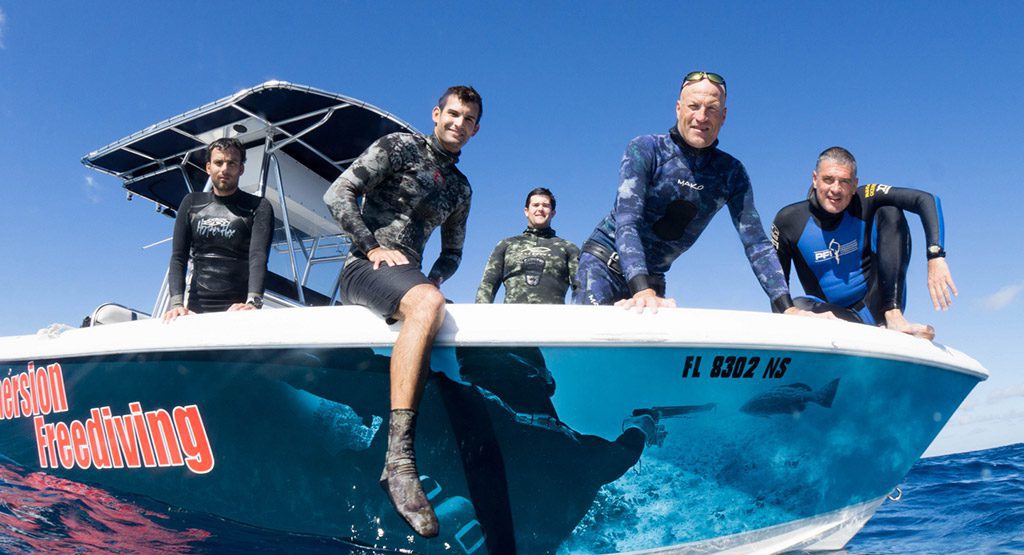
Physiology Over Physics
I admit tech diving has more math and physics than freediving does, but freediving has way more physiology than tech diving.
Kirk Krack, founder of PFI and a tech pioneer, says that there is more physiology taught in a PFI Intermediate class than in the upper levels of tech diving. The coolest topic we dive into is the mammalian dive reflex.
Dolphins, seals, and whales are mammals. We are mammals. Dolphins, whales, and seals have the mammalian dive reflex. It’s used to turn these mammals into freediving machines. Genetically encoded in every single human being is the mammalian dive reflex. You need to know how to turn that sucker on, so you turn into the freediver you were born to be.
When the dive reflex is active, the blood vessels in our fingers and toes constrict, pushing blood to our core to keep the heart, lungs, and brain supplied with oxygen. The dive reflex causes bradycardia, a fancy name for slowing of the heart. It does this to minimize our oxygen consumption. Sound useful for tech diving?
Our spleen contracts, which pushes more red blood cells into your blood. This raises the oxygen-carrying capacity of our blood. We get free and legal blood doping just by freediving. How cool is that! You’ll learn about these adaptations and how to apply them to your diving in a freediving class.
How To Activate Your Most Primal Reflex Before You Dive
Try doing three to four breath holds before you get in the water before your dive; that will start to kick in the dive reflex.
Breathe for two minutes, then hold until you have an urge to breathe.
Breathe for three minutes, then hold until you have an urge to breathe.
Breathe for four minutes, then hold until you have an urge to breathe.
Breathe for five minutes, then hold until you have an urge to breathe.
That would for sure kick in your dive reflex, but does take some time.
Another way is to breathe with your face immersed for five minutes with your mask on your forehead and your snorkel in your mouth. That water across the eye kicks in the dive reflex as well. Not as good as doing the breath hold, but at least you can get it going in five minutes before you go.
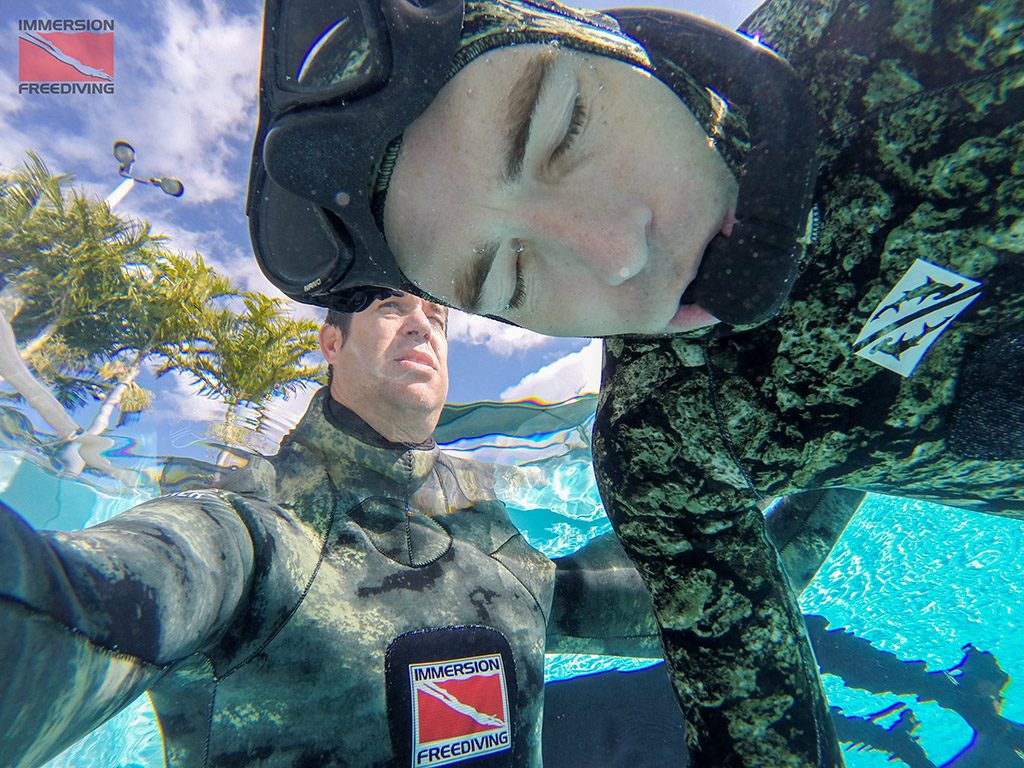
Kirk talks about having tech divers do this to kick in the dive reflex to lower air consumption and calm the mind before a dive. [Ed.note: Legendary cave explorer Sheck Exley used to do this before big dives.]
No Gear!!!
When I first started getting into freediving I was working as a dive instructor in the Florida Keys. I loved that on my day off, all I needed was a mask, fins, snorkel, and I could hop on my boat and go. No need to go to the dive shop to get my tanks filled.
Don’t get me wrong; I still like to put my tanks on to go hang out on a deep wreck, but if I want to play around 10-21m/30-70 ft, I’m freediving at that depth all day long with minimal gear.
Scuba diving is the integration of human and machine. In freediving, the human becomes the machine.
“Scuba diving is the integration of human and machine. In freediving, the human becomes the machine.”
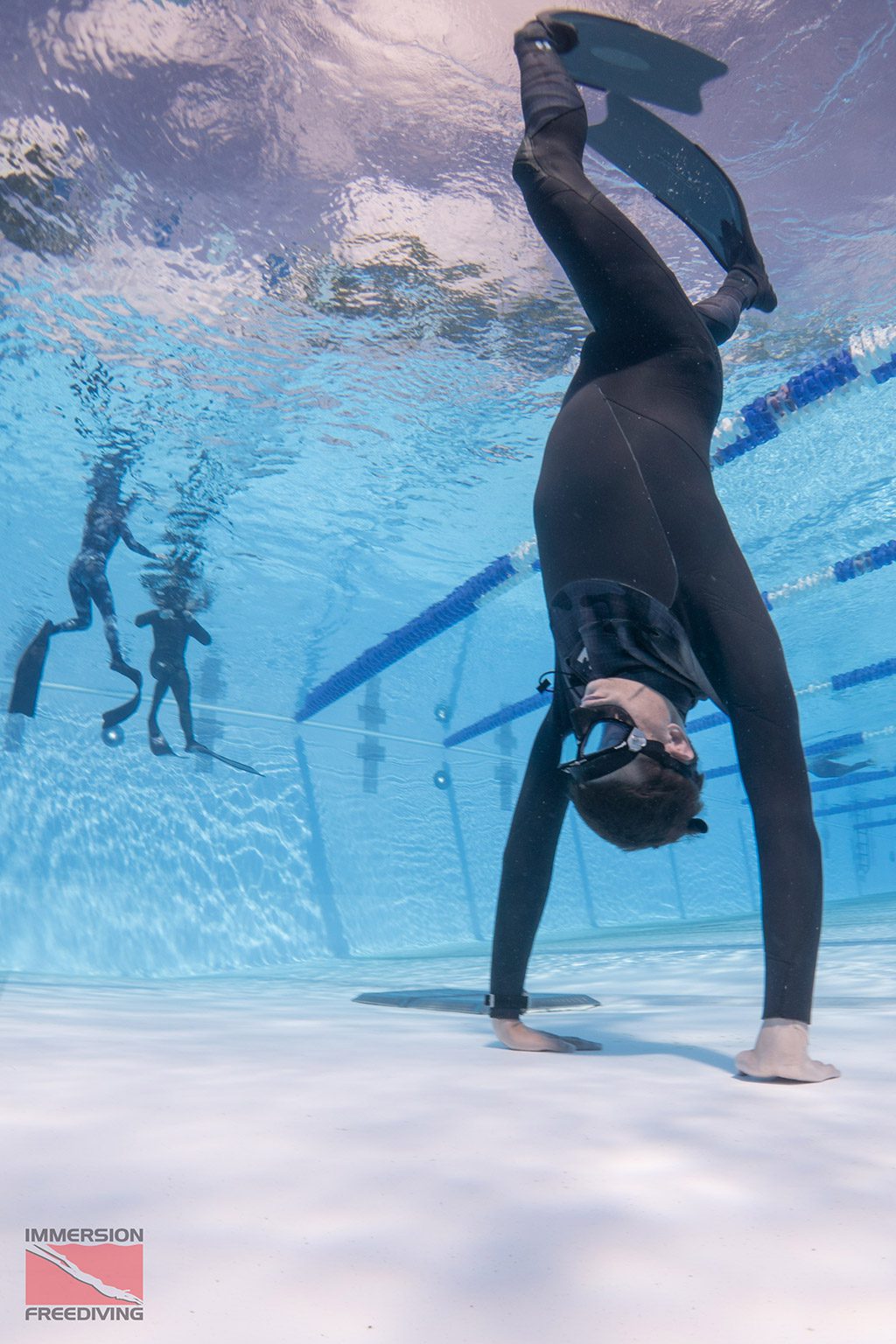
Freediving And Scuba Diving Do Not Mix
Let’s say you are coming up from a wreck dive. Do you come up fast or slow? SLOW!
What do you do at 5m/15ft? Safety stop.
Now, do you get on the boat, take off all your gear, and decide you’re going to freedive down to the top of the superstructure at 24m/80ft?
Question: when you take all your gear off, does the nitrogen magically come out of your body and attach itself to the tank and BC? Of course not!
But nevertheless, you freedive down to the wreck and then come up.
Do you come up fast or slow? FAST!
What do you do at 5m/15ft? Fly to the surface.
If you go freediving after scuba diving, you are asking to get bent. All the nitrogen is still in your body. I know of scuba instructors that got bent in the Keys doing exactly what I described.
Let’s address scuba diving after some freediving.
Here’s the issue: no one knows how much nitrogen freedivers are absorbing. There is no computer that tracks it, and DAN doesn’t know. However, we do know that freedivers get bent.
So, if you go freediving, you are absorbing some unknown amount of nitrogen, so you can’t properly plan for your upcoming scuba dive.That’s why I teach my students to freedive and scuba dive on separate days.
How To Get Started Freediving
I’ve included the steps on how to help you get started into freediving and some resources that will help you along your way.
Step #1 Safety
All great freedivers are safe freedivers.
Many freedivers are not safe, here is why.
While every scuba diver is REQUIRED to take a class with an instructor, pass a written test and be evaluated by an instructor in the water proving they can handle all emergency situations and rescue someone in need. The big difference is 90% of the people that freedive have not taken a freediving class.
They just walk into the dive shop and say I want those big fins, the tiny mask, the camo wetsuit and the biggest speargun you got. The dive shop swipes their credit card and it’s now on them to figure out how to not kill themselves while freediving.
See the difference?
Scuba divers can run out of air which can lead to a fatality unless they have procedures set up in place to prevent this issue. When Freedivers can run out of air, they experience shallow water blackout.
If a freediver doesn’t have a buddy there to watch and be available in the case of a blackout, it can lead to a fatality as well. On the other hand, if the freediver has a buddy right there, disaster can be easily averted. it’s incredibly easy to fix.
After working on a dive boat in the Keys for three years, I can assure you that rescuing someone from a blackout is infinitely easier than rescuing a panicked snorkel or scuba diver at the surface.
To learn the truth about shallow water blackout, for example, how to tell if you are wearing too much weight, and how to save your buddy’s life if they blackout, please check out www.FreedivingSafety.com. It’s not a substitute for taking an in-person course but it’s a great start.
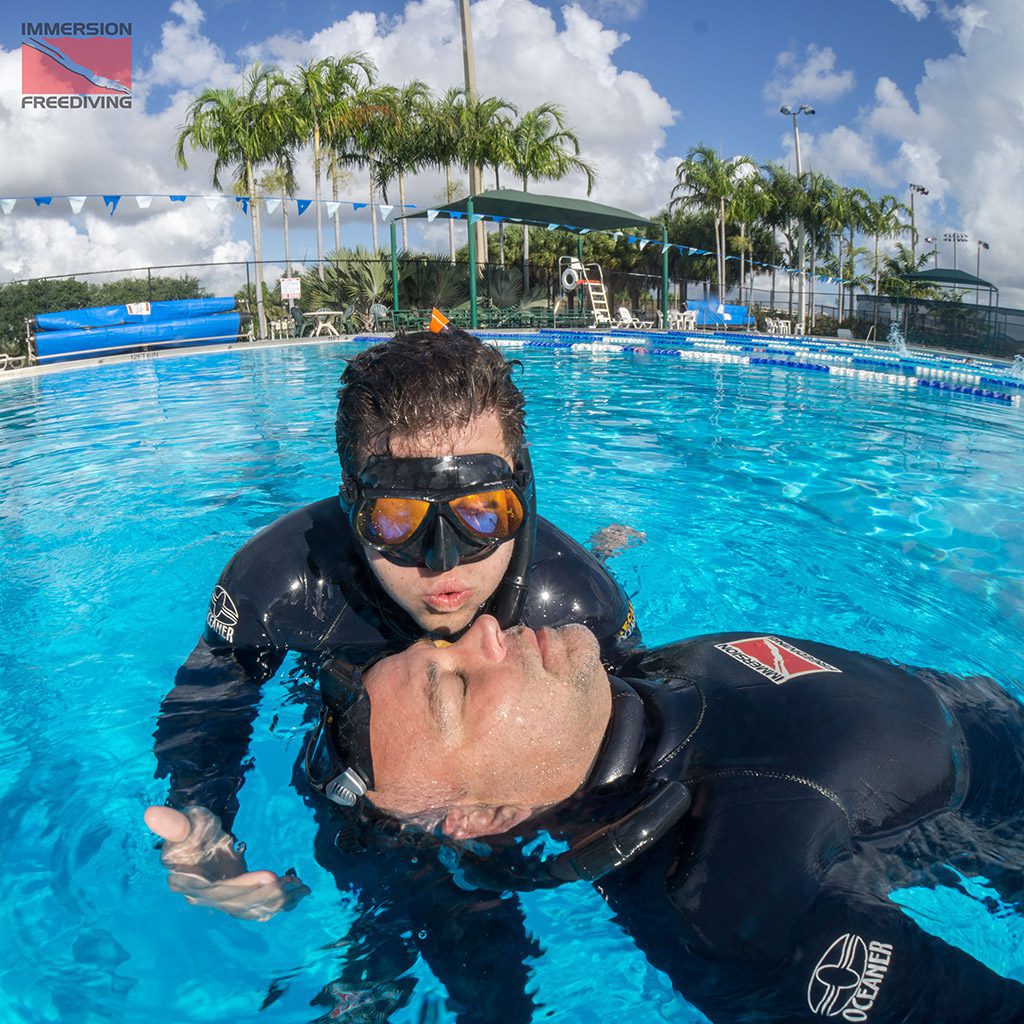
Step #2: Equalizing
Wait, wait, I can see the eyeballs from here. “Ted, I’m a tech diver. I can already equalize fine.”
Question: How deep will you be able to freedive if you use the Valsalva equalization method?
Answer: Likely no deeper than 9m/30ft! I’ve had probably five scuba instructors in my class get stuck at 5m/15ft because they were using the Valsalva method of equalizing, not the Frenzel method of equalization.
The dirty little secret in freediving classes is 20-40% of the students will get stuck at 5-9m/15-30ft, unable to equalize head down.
Freedivers must use the Frenzel equalization method if they want to equalize instantly and effortlessly head down.
So yes, YOU, the mighty tech diver who can dive to 300ft, can easily get stuck at 5m/15ft in your freediving class if you are not doing Frenzel.
Here is a short YouTube video to allow you to figure out which method you are using: Valsalva vs Frenzel Method of Equalization. If you are using Valsalva, there is an online course that will teach you how to switch from Valsalva to Frenzel: Roadmap to Frenzel
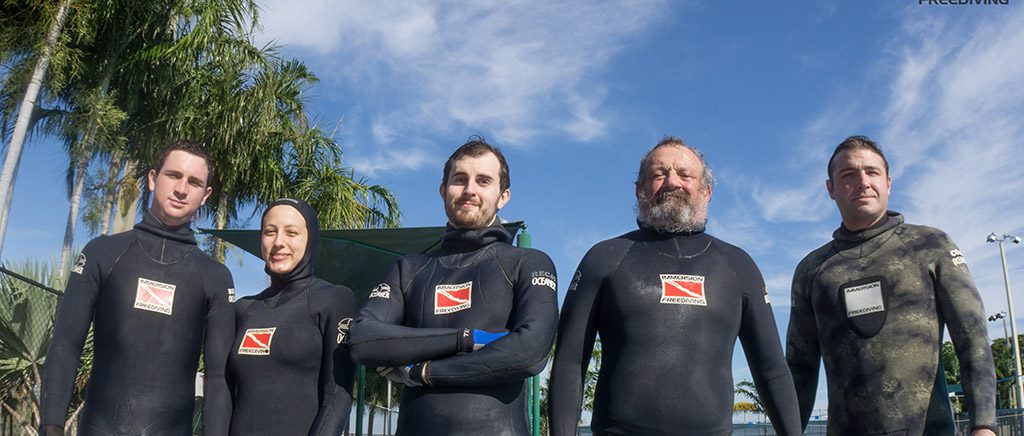
Step #3: Get your freediving questions answered.
Each episode of my podcast, Freedive Live, I answer the most common questions I’ve been asked over my 15 years as a freediving instructor.
Step #4: Take a freediving class.
I’m not currently teaching physical classes. I’ve moved to the North Georgia Mountains and there isn’t a lot of good freediving up here. However, here are some freediving classes I recommend. If you try any of them, please let me know how it goes.
• evolve FREEDIVING (PFI North Carolina)
• SoCal Spear-It (PFI California)
• East Coast Divers (SSI & PFI Boston)
• BlueAlchemy Freediving (PFI Virginia)
•Florida Freedivers (PFI Palm Beach FL)
• Bluewater Freedivers(PADI Florida)
• WATERMAN SURVIVAL (FII Puerto Rico)
•Freediving Instructors International—Daniel Koval (FII Hawaii)
•Freediving Instructors International-Errol Putigna (FII Florida)
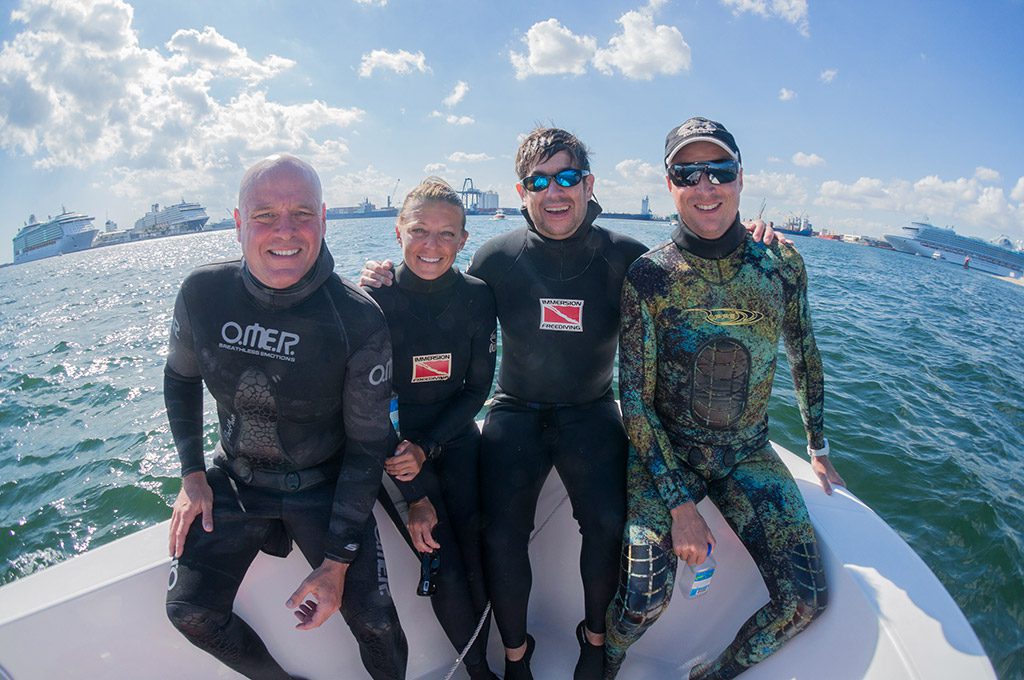
Step #5: At-Home Freediving Training Programs.
If you want to get the most out of your upcoming course, or if you have taken a course and you want to learn how to get better, I can show you how. My Freediving Training Secrets is a guided, freediving-specific training plan you can do from home. No pool or ocean required. I also create daily freediving advice videos on the following platforms:
www.Instagram.com/ImmersionFD
www.youtube.com/ImmersionFD
www.facebook.com/ImmersionFD
www.tiktok.com/@ImmersionFD
Dive safe out there!
DIVE DEEPER
DIVE DEEPER
InDEPTH: Is Freediving Safe? by Ted Harty
InDEPTH: FREE
InDEPTH: Doping for Depth by Charly Stringer
DeeperBlue.com: Technical Freediving: Are Breathhold Divers Ready To Mix It Up? By Michael Menduno
AIDA: WORLD RECORDS: AIDA official World Records History
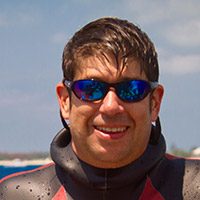
Ted Harty began his professional underwater career as a Scuba Instructor for PADI, NAUI, and SSI in 2005. In 2008 he took his first freediving class with Performance Freediving International. After that course, he wanted to go freediving instead of scuba diving on his days off, and realized his passion was freediving. In 2009, Ted took PFI’s first official Instructor program, and immediately started working for PFI helping Kirk Krack and Mandy Rae-Kruckshank teach courses all across the USA.
Ted went to his first freediving competition in 2009 as an overweight, out of shape scuba instructor and progressed from 24-27 m/80-90 ft freediver to 54 m/177 ft in three weeks. After the experience he wondered what he could do if he actually started training. Since that time, he’s broken a USA Freediving record in 2011, won three freediving competitions, and was selected to be the captain of the USA Freediving team in 2012; his deepest dive is 85 m/279 ft. Lately, Ted has been focusing on spreading his message of safe freediving through www.FreeedivingSafety.com, which offers a free online course sharing all of the safety information he teaches in his in-person classes. He can be reached via Facebook, Instagram, Youtube, and Twitter, @ ImmersionFD. Email: [email protected]

